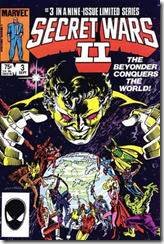
Two important WCF resources came out last week. The first is the source code for StockTrader 2.0, Microsoft’s reference app for .NET 3.5 using, in particular, CF and PF. The download is available here http://msdn.microsoft.com/en-us/netframework/bb499684.aspx. This is fairly significant since there are not (as far as I have been able to tell) any guidelines generally available on how to build a distributed application using the Communications Foundation. In the project I am currently working on, we have been trying and stopping as we go, trading frequent emails with various Microsoft insiders to try to find out if what we are doing makes sense (so far it has).
Now we have the opportunity to compare our app against StockTrader and see where the differences lie. I’m not sure if this is an artifice or not, but I like being able to take two ideas and decide which one better as I work through an architecture. This is a necessary exercise in working towards the "right" architecture. The approach resembles, in some ways, the Mirror of Nature that Richard Rorty made his name on attacking, except that it is concerned with practice rather than with epistemology. I think that there is a right way to do things of which I am unaware. To use Don Rumsfeld’s memorable phrase, it is one of the things I know I don’t know. I then work, through trial and error as well as a comparison of alternatives, towards an intellectual representation of what that correct way of getting things done might be.
I’ve talked to other developers who feel that speaking about the "right way" to do things is simply a trap we all fall into or, worse, a fiction that serves only to generate artificial conflicts and slow down actual development. As one developer told me, "There are many arguments on either side of any issue, and we’re not going to be able to resolve here which ones are better, since we come to it with preconceptions and prejudices we can’t get over easily." While visiting my brother at college once, I attended a lecture in which Alan Dershowitz, the civil rights lawyer, argued very much the same case. He insisted that he could go about seven levels behind any argument, and then seven levels behind the case against him. The peeling of levels (usually it only takes two or three) gives the false impression that we are actually getting to the bottom of things, whereas Dershowitz himself had reached the point in his career where he felt it was merely an exercise in cleverness for lawyers and for philosophers an exercise in futility.
This may all be true, and yet I feel I need this fiction, if it is a fiction, in order to do my job well.
The second important release this week is Juval Lowy’s presention on WCF: Beyond the Endpoints (you will need to have Microsoft Live Meeting installed to listen to it). In this presentation you will come to realize what many people already know: Mr. Lowy is either a genius or a madman, and had he lived in another era, he would have made a good Jules Verne villain. Based on his WCF book, I had taken his position to be that CF solves many distributed programming problems, and in the big picture serves as the fulfillment (or successor) to component based programming — the notion that based upon common and established conventions we can pass messages between disparate technologies.
In Beyond the Endpoints, Mr. Lowy tops even those grand pronouncements. Here he argues that CF is actually the successor to all of our current .NET programming conventions in C# and VB.NET, and is in fact a new programming model. With specific examples from the Singleton pattern to class level isolation, he demonstrates various low level ways in which WCF provides better ways to do our most common programming tasks. He makes clear in the Q&A session afterwards that he basically sees something in CF that even Microsoft doesn’t see in their technology. His vision for WCF veers wildly away from Microsoft’s vision. When asked what the performance penalty for using CF as a programming model would be, he insists that sending messages over a wire in WCF is actually faster than working with traditional in-proc objects (given certain unspecified conditions). Moreover, the performance cost is irrelevant. Mr. Lowy appeals to history in order to explain his vision for CF. COM, for instance, started off as simply a way to embed files inside of Microsoft Word documents. In order to get Object Linking and Embedding to work, however, Microsoft’s engineers were oblige to solve fundamental problems that in turn produced what we now know as COM. CF, for Juval Lowy, is headed very much along the same track.
It is a truly amazing presentation, ambitious in scope and broad in vision, and I highly recommend it to anyone interested in the inherent potential of the Communications Foundation.
